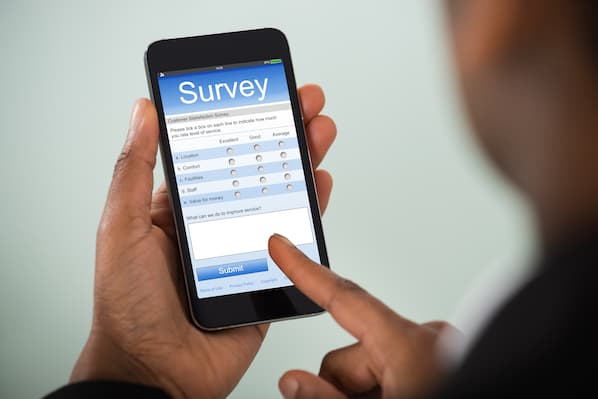Ticket sales tip #1: Get John Legend to speak at your event.
Just kidding.
Or not.
We really did invite John Legend to speak at one of our INBOUND events, but the truth is, you don’t need an A-lister to get people to attend. All of it comes down to planning — and part of that planning means driving ticket sales.
With online events being on the rise and remote work becoming the norm, it may seem easier than ever to reach a lot of people online. But the question remains the same. How do you get people to come to your event?
We're going to share some of our secrets with you that helps us drive ticket sales for INBOUND every year. Ready to maximize the ROI for your next event?
Download Now: Event Planning Checklist [Free Download]
15
- Reward last year's attendees.
- Offer early bird pricing and sell tickets on a scarcity model.
- Ask early registrants to write blog posts.
- Don't just promote your conference; promote the location!
- Get in touch with industry organizations to help promote.
- Use LinkedIn for promotions targeted to your industry.
- Start contests within your company.
- Consistently update social media accounts.
- Purchase paid ads on social media.
- Leverage event sponsors for promotion.
- Sprinkle calls-to-action throughout your website.
- Issue different types of passes.
- Promote the fun stuff.
- Gamify the act of event promotion and ticket sales.
- Ask your speakers to write blog posts promoting their sessions.
1. Reward last year's attendees.
If you have an annual event, the first thing you should do is announce the event to last year's attendees. The people who came the year before may be your biggest supporters and are more likely to immediately purchase the tickets, even if you don't have all the details for the event hammered out quite yet. Show that you appreciate them by offering them a special discount for signing up early and quickly.
And don’t worry about emailing each person manually. Rather, use an email marketing service to send a personalized email to your contacts and prospects. Aside from using options like MailChimp, Emma, or ConstantContact, you can also use Marketing Hub to reach out to previous attendees.
2. Offer early bird pricing and sell tickets on a scarcity model.
Have at least two different types of pricing: early bird and regular. You can even have more than one type of early bird pricing to encourage people to buy before the prices increase. This sense of urgency will encourage people to buy sooner.
Consider structuring early bird pricing with a table plugin on your event website. Our INBOUND marketers recommend highlighting the distinct difference between an early bird and regular ticket, making it irresistible for people to sign up. Add a date limit, too.
Isabella Kirsch, INBOUND Marketing Manager, says, “We like to create urgency with the pricing structure to engage our audience early on. It’s important to know what you're relying on as your lever. In a waterfall structure, for example, registrants are aware of price change dates through calendar reminders from your email team. In a scarcity system, tickets run out based on allocated amounts per price tier.”
Which one is most successful?
“We've done a lot of testing with both models and found both can have success,” Isabella says. “If you are establishing an event, changing the price on certain dates is a nice route because customers can be prepared and are compelled to act before the price increases. If you're already getting a lot of buzz, the scarcity model gets people eager to buy early, since they don't know when the current price is going to run out!”
3. Ask early registrants to write blog posts.
The people who register for your event first will be among your biggest supporters — that means they're also good candidates to write blog posts for you to help promote the conference.
For our first INBOUND event ever, we had the first registrant write a blog post, and in the following year, we invited a previous attendee to write about their experience. Why?
Instead of hearing from the HubSpot team why we thought our event was great, these posts let you hear why it's a can't-miss opportunity from actual attendees. Third-party endorsements will always carry more weight, and don’t forget the power of social proof. When we see other people are going to an event, we want to attend, too!
Consider inviting them to write on places other than your blog. They can use outlets such as Medium, LinkedIn, and even their own company blog to write about their experience or expectations for the event.
4. Don't just promote your conference; promote the location!
In-person events are on pause for now, but they’ll return in time. When you plan an in-person conference, remember that the event’s location is prime marketing material.
People interested in your conference don't just want to hear about the event, they want to hear about the city where it will be hosted. Frankly, the location of conferences can be one of the biggest draw for potential attendees — it's kind of hard to say no to an event in a cool, beautiful city.
Promote other attractions near your conference that may interest attendees. If you can get discounted rates to some of those attractions, that's even more of an incentive for people to attend your conference!
Holding the event online? We recommend offering local perks that can help people rediscover where they live. Consider partnering with local breweries, regional restaurant chains, or other attractions to offer discounts to your attendees. Alternatively, you can partner with social-distancing-friendly service providers such as GrubHub to offer a free meal delivery (either during the event or after).
5. Get in touch with industry organizations to help promote.
In every industry, there are professional organizations who would be more than happy to help you promote your event. Get in touch with them, tell them about your event, provide email copy, and make it easy for them to promote on your behalf. This will help get your event in front of thousands of more qualified people that you wouldn't normally have access to. You shouldn't forget online platforms that can help you reach the right people and drive more event registrations.
Other business-related organizations, such as chambers of commerce, will be happy to list your event for free, especially if you offer discounts to their members. Additional organizations to consider are regional, national, and international associations focused on a specific facet of your vertical.
For HubSpot, one such organization would be the American Marketing Association, since one of our primary products is a marketing automation platform.
Every organization will be different. Some will agree to post your event for free, while others might require you to become a member. Others might not have a calendar at all, and instead will encourage your conference to become a sponsor of their organization. This is a great way to promote the event to a wide range of professionals. It will also help you build backlinks to your event website, which will improve your SEO.
6. Use LinkedIn for promotions targeted to your industry.
LinkedIn Company Pages, Events, and Groups are a great way to contact people in your industry who may be interested in your event. Take advantage of the ability to promote your event to thousands of relevant people in your industry, on a social network built for networking — you know, the reason people go to events.
Creating an event page on LinkedIn also gives attendees the opportunity to post questions and network with each other. On groups related to your vertical, you can post periodically (but not too often) about this amazing event that you’re hosting. If you’d like your efforts to truly pay off, consider offering discounts to group members who share your post.
7. Start contests within your company.
Don't forget about the giant network you have right within your office's four walls — your employees. Encourage them to promote your event to the leads and customers they talk to through some friendly competition.
Incentivize ticket sales by offering prizes to whoever sells the most tickets (give everyone a unique discount code so you can track it!), or you could even reward a full team for working together to sell tickets.
Make it easy for your team to reach out to prospects by creating an email template that everyone can use.
8. Consistently update social media accounts.
Social media accounts should have weekly updates with information about your conference, including links to the event's registration page. Give your network a compelling reason to attend your conference in those updates, and a link to the registration page to close the deal.
Consider posting quotes from your speakers, which will advertise the amazing people whom you’ve invited. Another fun thing to consider is engaging with pop culture through carefully chosen challenges and “memes.” A well-placed pop culture reference can help you look current. Again, choose these very carefully. We’d provide an example, but trends change so rapidly that it would look outdated within the week!
9. Purchase paid ads on social media.
Leveraging your paid advertising options on social media is another way to target people in your industry. Use targeted ads to promote to your industry with links directly to the registration page. If you need help getting started, here is a guide for executing a Facebook ad campaign, and a guide for executing a LinkedIn ad campaign.
The cost for these ads is on a pay-per-click (PCC) basis, meaning that you’ll only be charged when people click. It’s therefore budget-friendly, and you can also easily take a look at key performance indicators (KPIs) such as sign-ups. To set up an ad, you’ll need a unique landing page with a form to sign up for the event and some great copy that will entice people to register.
10. Leverage event sponsors for promotion.
Your sponsors will want to help you with promotion, because more attendees means more facetime with more people. But they're busy. Really busy. So the easier you make event promotion on them, the more likely it is they'll actually do it. Provide sponsors with templated email copy and discount codes so it's easy to promote to their lists.
If you don’t yet have event sponsors, it’s simple to find a few, especially if you offer something in return. First, be sure to set up a “Sponsorship” or “Partnership” page on your event website. Most potential sponsors will want to choose between different levels, and some would also prefer a custom sponsorship option.
Being “visible” in front of five hundred people might not be enough for sponsors to join. Because it’s difficult to measure ROI on visibility alone, consider sprinkling more concrete perks such as a spot in your newsletter, a guest post on your company blog, and a backlink from the sponsorship page. Tip: Consider making this a do-follow link, too — if your sponsors are SEO-savvy, they’ll take a look at the structure of the link they’re getting.
Here’s the way our INBOUND marketers do it:
11. Sprinkle calls-to-action throughout your website.
Your homepage should have a promotion to your conference. Your login page (if you have one) should have a promotion to your conference. Your blog should have banners promoting your conference.
If you're planning a huge event, most pages on your website should have links to your conference site, making it easy for anyone to find information about your event and register. Our tip: these calls-to-action should be bold, easy-to-find buttons in a color that’s difficult to miss.
And these CTAs shouldn’t be catch-all, either; rather, they should be targeted and highly tailored — especially for virtual events. An in-person experience allows attendees to pick and choose the talks they want to attend. Virtual events have a set schedule, meaning you must tailor the call-to-action and make your value proposition clear.
“Marketing is human first,” says Andréa Hudson, HubSpot’s Senior Marketing Manager of Global Events. “When we went virtual for INBOUND, leading with empathy was a huge part of our strategy. When you're responsible for scaling an industry event from 26K in-person to 70K+ digitally, it's extremely important to prioritize your value proposition and tailor that to your audience.”
12. Issue different types of passes.
Some people may not be able to attend your whole event, whether they're unavailable for the full duration, can't be away from the office for so long, or can't swing the hotel costs. Issuing different types of passes helps accommodate those people and drive more ticket sales.
Consider passes like a student pass, a keynote pass, or a premier pass. Other options include basic, plus, and pro passes. At our INBOUND event, we have two options: the Digital pass and the Content pass, which gives attendees additional access to more content and information.
13. Promote the "fun stuff."
Anyone heard of Cyndi Lauper? Anyone? Announcing a headliner performer will drive a lot of ticket sales as well as get people excited for more than just the content you'll have during your conference sessions.
But you don’t have to spend thousands or even hundreds of thousands of dollars inviting a headliner, either. If you’re in a highly specialized industry, consider inviting a prominent industry expert who will entice professionals to attend.
You can also promote other fun stuff such as social activities. The main reason people attend conferences is for the beneficial content, sure, but promoting the parties and some of the nighttime activities definitely helps. I mean, who doesn't like to party?
For online events, you can host a digital happy hour where drinks are welcome. Other ideas include scheduling trivia games, Jeopardy games, and wellness sessions that can help attendees decompress between presentations. Online zumba lessons, anyone?
14. Gamify the act of event promotion and ticket sales.
Host contests or games with your network to promote your conference and drive ticket sales. During your webinars, for example, you could take advantage of the large audience to promote the conference by giving away free tickets to whoever tweeted the most with your webinar hashtag. Everyone loves a little friendly competition, and you'll certainly love the free promotion of your event!
15. Ask your speakers to write blog posts promoting their sessions.
The success of an event all comes down to its content. Reach out to speakers and ask them to write guest blog posts that promote their sessions, and give a sneak preview of what they'll be discussing.
It's a win-win — they get more attendees excited about their session, and you get free content (that your guest blogger will likely promote to their network) to drive ticket sales.
Virtual Event Marketing Tips
Getting people to buy tickets is one thing. Getting them to be aware of the event in the first place is another (seriously, it’s hard!).
This is especially difficult for digital events, which can’t rely on physical modes of marketing such as bus wrapping and event swag. Stickers, mugs, t-shirts, and bus wraps were previously excellent ways to promote events.
In an increasingly remote environment, you’ll need to think of new ways to get the word out. For most companies, virtual events are the only choice. But don’t be discouraged: hosting a virtual event has tangible benefits over in-person conferences. “Unlike physical events, virtual events, such as live streams or webinars, enable your brand to gain awareness from international audiences,”says Pamela Bump, Manager of Audience Growth at HubSpot.
Ready to reach a lot more people and get more registrations for your virtual event? Here are three easy promotion tips that you can implement right now.
1. Create a unique event hashtag.
Using a hashtag will stimulate conversations on Twitter, Facebook, and other social media sites. This hashtag can be used by everyone involved in your event — from speakers to sponsors to actual attendees.
It’s up to you whether to include the year after the name of the event (#Event versus #Event20XX). We do like to include the year so that all posts relate specifically to that year’s sessions, speakers, and offerings.
Your event should also have its own unique social media profiles. While we encourage you to promote the event through your company’s social media, consider making unique Twitter, Facebook, and Instagram accounts for the conference. This will create a unique brand voice and give attendees an account to tag in their posts. It can also help you separate event-related news from company news.
2. Create an online community.
Part of the reason people go to events is to network. Virtual events may seem exempt from this rule, because attendees are sitting in front of a screen rather than interacting in person. By creating an online community, you’re re-integrating this necessary element into your event.
It’s free, too. Facebook groups, LinkedIn groups, and Slack channels are all fantastic ways to put your attendees in front of each other. Even more, these groups make it easy for attendees to invite other professionals in their network, increasing awareness and driving registrations.
Our INBOUND marketers take a community-first approach when promoting the event. We want to make sure that attendees know they’re not just a face in front of a screen, but a member of an international community.
3. Create an email drip campaign.
Drive more registrations with an email drip campaign that reminds your contacts to sign up for the event. For those who’ve already done business with you before, consider providing a unique discount code to thank them for their loyalty.
The emails should align with email marketing best practices. Include a compelling subject line, a clear heading, a few lines of succinct copy, and an unmissable call-to-action.
Hitting Attendance Goals for Virtual Events
Every year, more than 25,000 people attend INBOUND. Our marketing campaigns are aggressive, but with good reason: we’re one hundred percent confident that this event will enrich attendees’ professional lives. We know they’ll walk away with valuable knowledge that can help them advance their careers.
To hit attendance goals for your virtual event, you mustn’t be shy or humble. The value you bring to your attendees can’t be found elsewhere. That’s why you’re investing thousands upon thousands of dollars to create an event that educates, entertains, and provides value.
We also can’t overstate the importance of using data to create varied campaigns that address different stages of the buyer’s journey. “Tactically, the marketing mix needs to be dynamic and impactful,” says Andréa Hudson. “There is no turn-key, blanketed approach in achieving a sell out. Digging into the data and making informed decisions based on that data is the only way to exceed your targets.”
Here are a few of our tips for hitting attendance goals at your next event.
1. Look into the KPIs of previous events you’ve held.
To better market your event, you’ll want to know how your previous event marketing tactics fared. If you’ve held an event previously, take a look at the data so you can improve this next one.
Some helpful historical data to look into would be:
- Number of registrants
- Number of attendees
- Conversion rates on your event’s landing page
- Conversion rates in social ads
- Email open and click-through-rates
- Number of leads
- Generated revenue
- Individual session registrations
- Session feedback
Based on the data you gather, you can make more sophisticated decisions about your landing page design, your social copy, and pricing strategy.
2. Identify your target attendees and tailor the agenda to them.
This is a really important step. If you know who you’re targeting the event to, you can create marketing campaigns that highlight the specific value you bring to them. As a result, you’ll get a higher number of registrations, better engagement, and higher attendance rates.
Alternatively, you can create an agenda first, then identify the type of buyer who would be compelled to buy a ticket. You should identify both psychographic and demographic information of your target audience to better align your messaging.
3. Create an event marketing plan.
Now that you have your historical data and target buyers, it’s time to create a marketing plan. There will be four principal tenets: website, organic social, paid social, and email.
On your company website, be sure to include consistent calls-to-action to visit the event website (preferably, it would take visitors straight to a landing page where they can sign up).
On your event website, be sure to clarify your value proposition. For example, including a list of your speakers makes it clear that you’re committed to offering valuable content.
Launch ads on the best social media platform for your industry (if it’s a B2B event, for example, you’d likely opt for LinkedIn).
An email campaign is also crucial for providing event reminders and invites to buy tickets.
4. Provide sneak previews of the content.
Many of us love to know what we’re in for before making a purchasing decision. By providing sneak previews through email and social — and even on your website — you’re giving potential attendees a taste of what they’ll get if they purchase a ticket.
Your speakers can film a “session trailer” telling more about the information they’ll share during their talks. One thing we do at INBOUND? We give access to notable content from previous years. That way, people can see the value they would get should they choose to attend.
5. Provide on-demand recordings.
Why? Some potential attendees may be too busy to attend a live virtual event, and if you only offer a live option, you’d be discouraging those who would prefer to watch the sessions on their own time. This would open up your event for more people and thus increase registrations.
6. Give corporate discounts or group discounts.
What better way to increase attendance than by inviting groups to purchase tickets? Many organizations buy passes for entire teams. Some companies take their entire workforce to events. This is a sure-fire way to sell tens and even hundreds of tickets at a time.
7. Prioritize accessibility.
Closed captioning, live sign language interpreters, and assistive technologies will make your event enticing to more registrants. Dedicate one or two team members who are ready to provide support should an attendee have a problem with accessibility or require accommodations.
Be sure to also include a form on your website for accessibility requests, and provide written and visual materials ahead of time in widely-used file formats. Your accessibility initiatives should be driven by inclusive design principles.
If you make your event inaccessible, you're ignoring a segment of your target audience. Don’t forget to advertise your options for accessibility, which would make it known to potential buyers that they will have the necessary accommodations to attend.
Sell Out Your Next Event
If we could leave you with one last tip, it would be to brag. Brag about your speakers, brag about your sessions, and brag about the amazing tools your attendees will walk away with after the event. After all, people are investing on a ticket. You want them to know they’ll receive a worthwhile return on their investment.
Editor's note: This post was originally published in August 2012 and has been updated for comprehensiveness and accuracy.
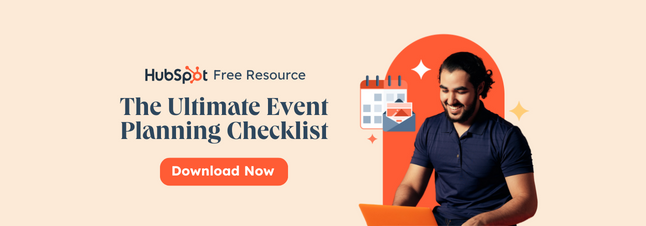
Event Marketing

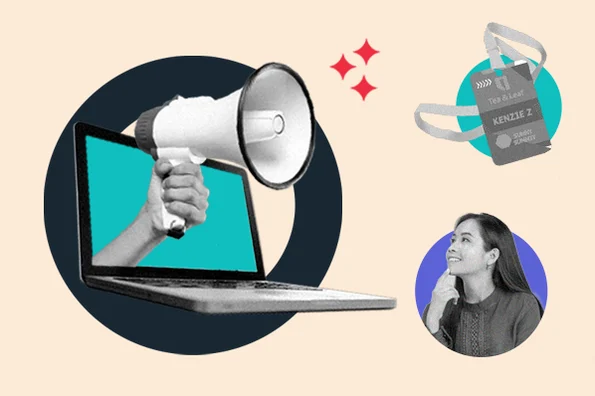
![11 best event registration software tools [+ what makes them great]](https://53.fs1.hubspotusercontent-na1.net/hubfs/53/65_8%20Best%20Event%20Registration%20Tools.png)
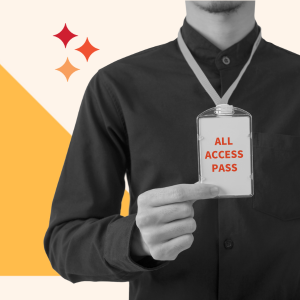
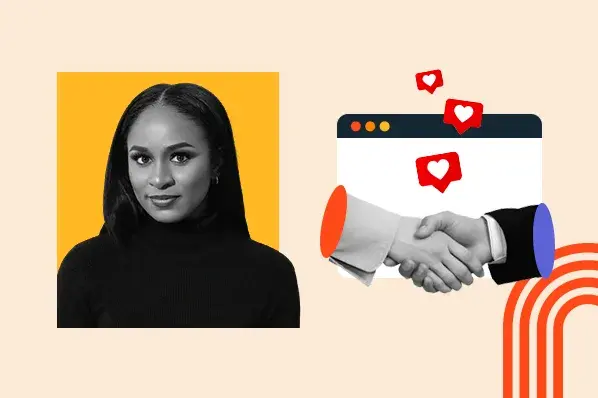

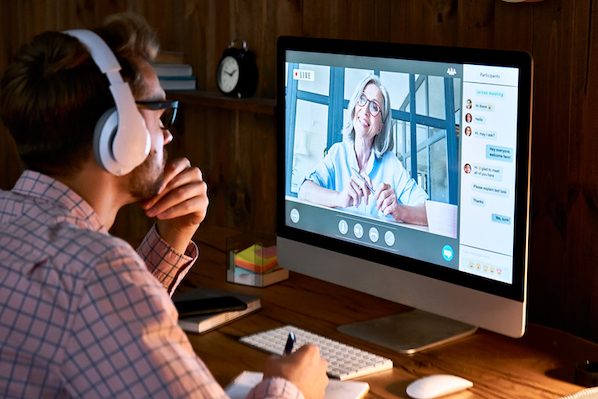



![What Is a Breakout Session? [+ How To Plan Your Own]](https://53.fs1.hubspotusercontent-na1.net/hubfs/53/breakout-session_2.webp)
